Product Design
Design a feature for Todoist, a task management app, that helps users with task prioritization and minimizes procrastination.
Design a feature for Todoist, a task management app, that helps users with task prioritization and minimizes procrastination.
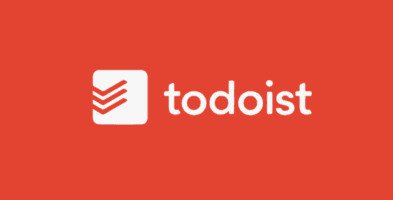


How to Approach and Answer This Question in a PM Interview
This question evaluates your ability to design a user-centered feature that solves a specific problem. Here's how to structure your answer with more detail:
1. Start with Context
Tip: Provide background on Todoist and the challenges of task prioritization and procrastination.
Say something like:
“Todoist is a leading task management app known for its simplicity and cross-platform functionality. One common challenge for its users is managing task overload, where they struggle to prioritize effectively and procrastinate on important tasks. A feature addressing these issues could improve user productivity, reduce cognitive load, and enhance user satisfaction, aligning with Todoist’s mission to help people organize their lives more effectively.”
By setting the stage, you show an understanding of the app’s purpose and user pain points.
2. Analyze the Problem
Tip: Highlight why task prioritization and procrastination are critical issues for users.
Say something like:
“Users often:
Feel overwhelmed by long task lists and don’t know where to start.
Over-prioritize urgent but less important tasks, neglecting long-term goals.
Fall into procrastination due to unclear priorities or lack of motivation.
A feature that simplifies prioritization and combats procrastination can address these pain points effectively.”
This demonstrates empathy for the user and a focus on their needs.
How to Approach and Answer This Question in a PM Interview
This question evaluates your ability to design a user-centered feature that solves a specific problem. Here's how to structure your answer with more detail:
1. Start with Context
Tip: Provide background on Todoist and the challenges of task prioritization and procrastination.
Say something like:
“Todoist is a leading task management app known for its simplicity and cross-platform functionality. One common challenge for its users is managing task overload, where they struggle to prioritize effectively and procrastinate on important tasks. A feature addressing these issues could improve user productivity, reduce cognitive load, and enhance user satisfaction, aligning with Todoist’s mission to help people organize their lives more effectively.”
By setting the stage, you show an understanding of the app’s purpose and user pain points.
2. Analyze the Problem
Tip: Highlight why task prioritization and procrastination are critical issues for users.
Say something like:
“Users often:
Feel overwhelmed by long task lists and don’t know where to start.
Over-prioritize urgent but less important tasks, neglecting long-term goals.
Fall into procrastination due to unclear priorities or lack of motivation.
A feature that simplifies prioritization and combats procrastination can address these pain points effectively.”
This demonstrates empathy for the user and a focus on their needs.
Start Earning ₹ 10 LPA in just 6 months
Start Earning ₹ 10 LPA in just 6 months
3. Propose the Feature
Feature Name: “Focus Finder”
How It Works:
Smart Priority Score (SPS):
Each task is assigned a score based on urgency, importance, deadlines, and user preferences.
SPS is calculated using:
Task deadlines (sooner = higher score).
Task importance (user-defined or AI-suggested based on past behavior).
Contextual factors like estimated completion time and effort.
Focus Mode:
Users can activate a distraction-free mode, which presents one high-priority task at a time.
Focus Mode blocks other notifications and rewards users for completing tasks (e.g., streaks or gamified achievements).
Procrastination Breaker:
AI suggests “bite-sized subtasks” for large tasks to make them more approachable.
Prompts users with motivational nudges (e.g., “You’re just one step away from finishing this!”).
Daily Priority View:
A visually distinct section at the top of the app displays “Today’s Top 3 Tasks,” dynamically updated based on SPS.
Reflect and Improve:
At the end of the day, users receive a brief report showing completed tasks, missed priorities, and suggestions for improvement (e.g., “You completed 2/3 top-priority tasks today—great job!”).
4. Address Challenges and Mitigation Strategies
Tip: Acknowledge potential obstacles and propose solutions.
Challenge 1: Users might feel overwhelmed by AI-suggested priorities.
Solution: Allow users to override the SPS and customize priorities to retain control.
Challenge 2: Over-reliance on the feature could stifle flexibility.
Solution: Offer a “manual mode” for users who prefer to prioritize tasks themselves.
Challenge 3: Task complexity might not always align with suggested subtasks.
Solution: Let users refine AI-generated subtasks to better suit their needs.
3. Propose the Feature
Feature Name: “Focus Finder”
How It Works:
Smart Priority Score (SPS):
Each task is assigned a score based on urgency, importance, deadlines, and user preferences.
SPS is calculated using:
Task deadlines (sooner = higher score).
Task importance (user-defined or AI-suggested based on past behavior).
Contextual factors like estimated completion time and effort.
Focus Mode:
Users can activate a distraction-free mode, which presents one high-priority task at a time.
Focus Mode blocks other notifications and rewards users for completing tasks (e.g., streaks or gamified achievements).
Procrastination Breaker:
AI suggests “bite-sized subtasks” for large tasks to make them more approachable.
Prompts users with motivational nudges (e.g., “You’re just one step away from finishing this!”).
Daily Priority View:
A visually distinct section at the top of the app displays “Today’s Top 3 Tasks,” dynamically updated based on SPS.
Reflect and Improve:
At the end of the day, users receive a brief report showing completed tasks, missed priorities, and suggestions for improvement (e.g., “You completed 2/3 top-priority tasks today—great job!”).
4. Address Challenges and Mitigation Strategies
Tip: Acknowledge potential obstacles and propose solutions.
Challenge 1: Users might feel overwhelmed by AI-suggested priorities.
Solution: Allow users to override the SPS and customize priorities to retain control.
Challenge 2: Over-reliance on the feature could stifle flexibility.
Solution: Offer a “manual mode” for users who prefer to prioritize tasks themselves.
Challenge 3: Task complexity might not always align with suggested subtasks.
Solution: Let users refine AI-generated subtasks to better suit their needs.
Know why learners choose ISS
Know why learners choose ISS
5. Conclude with Benefits and Success Metrics
Tip: Tie the feature to measurable outcomes and user impact.
Say something like:
“The Focus Finder feature addresses procrastination and prioritization by guiding users toward actionable, meaningful tasks. Its benefits include:
Reduced Cognitive Overload: Users spend less time deciding what to work on.
Increased Task Completion Rates: Breaking tasks into smaller steps helps users start and stay motivated.
Higher User Engagement: Gamified rewards and end-of-day reports create positive feedback loops.
Success metrics would include:
Increased percentage of tasks marked as completed daily.
Higher retention rates for users engaging with Focus Mode.
Positive feedback through user surveys (e.g., NPS for the feature).”
Why This Approach Works
Problem-Driven: It starts with user pain points, ensuring the feature has real-world relevance.
Comprehensive Solution: The proposed feature is detailed, actionable, and flexible.
Balanced Thinking: It acknowledges challenges and offers solutions, demonstrating a practical mindset.
Measurable Impact: It ties back to business and user outcomes, showcasing a results-oriented approach.
This detailed response reflects strategic thinking and user empathy, making it a strong answer for a PM interview.
5. Conclude with Benefits and Success Metrics
Tip: Tie the feature to measurable outcomes and user impact.
Say something like:
“The Focus Finder feature addresses procrastination and prioritization by guiding users toward actionable, meaningful tasks. Its benefits include:
Reduced Cognitive Overload: Users spend less time deciding what to work on.
Increased Task Completion Rates: Breaking tasks into smaller steps helps users start and stay motivated.
Higher User Engagement: Gamified rewards and end-of-day reports create positive feedback loops.
Success metrics would include:
Increased percentage of tasks marked as completed daily.
Higher retention rates for users engaging with Focus Mode.
Positive feedback through user surveys (e.g., NPS for the feature).”
Why This Approach Works
Problem-Driven: It starts with user pain points, ensuring the feature has real-world relevance.
Comprehensive Solution: The proposed feature is detailed, actionable, and flexible.
Balanced Thinking: It acknowledges challenges and offers solutions, demonstrating a practical mindset.
Measurable Impact: It ties back to business and user outcomes, showcasing a results-oriented approach.
This detailed response reflects strategic thinking and user empathy, making it a strong answer for a PM interview.
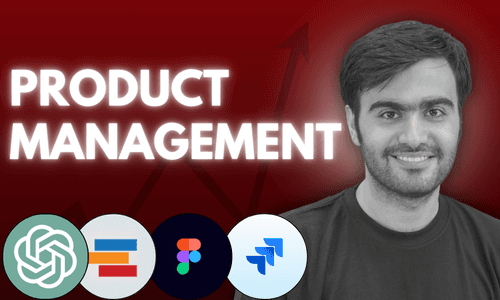
Product Management
Course Includes:
100% Job Assistance
100% Job Assistance
Mock Interview
Mock Interview
Industry-Relevant Experts
Industry-Relevant Experts
Share on:

Product Management
Course Includes:
100% Job Assistance
Mock Interview
Industry-Relevant Experts
Share on:
Share on:
Share on:
Share on:
You May Also Like
You May Also Like

Product Management
Should Zomato enter the cloud kitchen business? What are the risks and rewards?
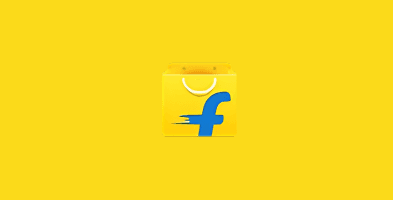
Product Management
Design a feature for Flipkart that helps customers discover locally made product...
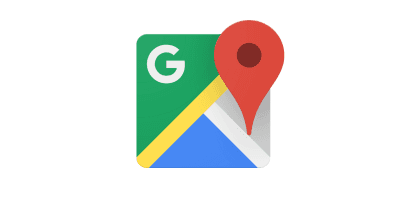
Product Management
(Google) How would you redesign the Google Maps interface for users in rural are...

Product Management
(Swiggy) Design a new feature for Swiggy that helps users discover healthy and a...
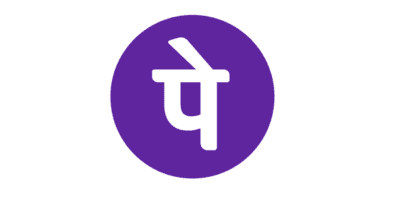
Product Management
Design a feature for PhonePe that encourages users to adopt digital gold as a sa...

Product Management
Design a feature for CRED that incentivizes users to pay their credit card bills...

Product Management
Should Zomato enter the cloud kitchen business? What are the risks and rewards?

Product Management
Design a feature for Flipkart that helps customers discover locally made product...

Product Management
(Google) How would you redesign the Google Maps interface for users in rural are...

Product Management
(Swiggy) Design a new feature for Swiggy that helps users discover healthy and a...

Product Management
Should Zomato enter the cloud kitchen business? What are the risks and rewards?

Product Management
Design a feature for Flipkart that helps customers discover locally made product...

Product Management
(Google) How would you redesign the Google Maps interface for users in rural are...

Product Management
(Swiggy) Design a new feature for Swiggy that helps users discover healthy and a...